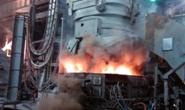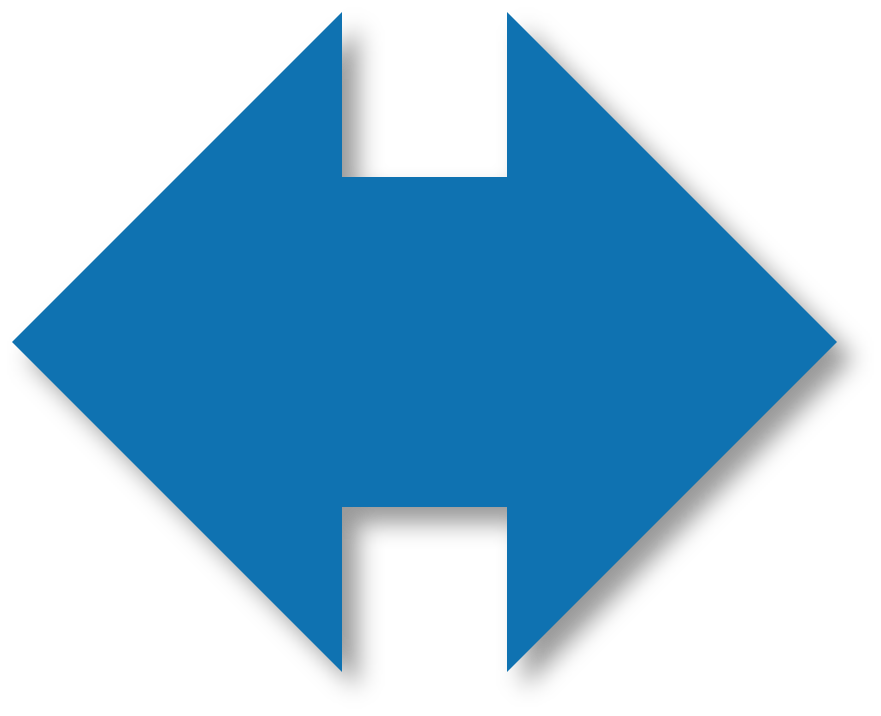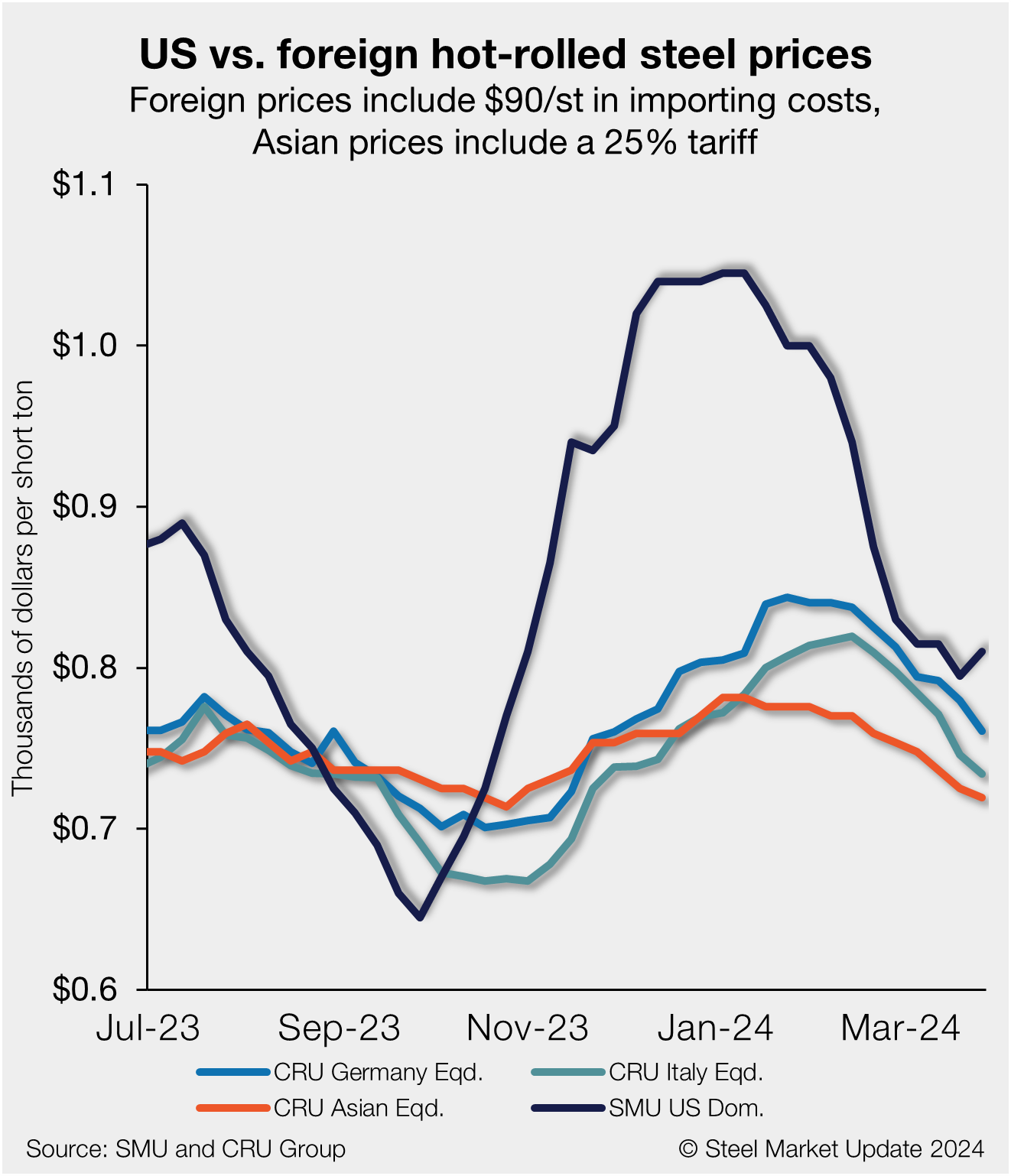Steel Products Prices North America

Cliffs Plans DRI Facility for 2018
Written by Sandy Williams
April 27, 2017
Cliffs Natural Resources continues to shore up its balance sheet and focus on reducing its debt. A $72 million debt extinguishment/restructuring charge resulted in a net loss of $30 million for the quarter. Debt was reduced by $550 million during Q1 resulting in total debt at the end of the quarter of $1.6 billion. First quarter revenue increased 51 percent year over year to $462 million. Adjusted EBITDA was $92 million, an increase of 156 percent from Q1 2016.
Iron ore pellet sales volume increased 63 percent to 3.1 million long tons in first quarter as compared to the same quarter in 2016.
Cliffs expects to generate $380 million of net income in full year 2017 based on the assumption that iron ore and steel prices remain steady. CEO Lourenco Goncalves said Cliffs will end the year with debt substantially below $1 billion.
Goncalves commented in the earnings report, “The steel prices in the United States are at their highest since I have been with Cliffs. And all signs point to a sustained and healthy year. The noise about Chinese and domestic steel price arbitrage is irrelevant now. With the trade cases we have in place and a strong commitment to enforce them, the reality is demand for steel in the United States is good. Our clients are doing well in the markets, and the measures to curb illegal trading imports have been put in place. The coming years appear promising for both the blast furnaces and EAFs. And with our current market position, as well as the opportunities we have to expand our customer base, the future is bright for Cliffs.”
A DRI facility is in discussion for 2018 that will expand Cliffs role in supplying EAF mills. The first facility will produce 1.5 million tons of DRI per year using 2 million tons of Cliffs’ own pellets. A site has not been settled on, and there is still hope that it will be at the Essar Steel Minnesota site, but other options are being developed. The DRI facility will be totally funded by Cliffs.
During the earnings call Goncalves said, “Until the big bank transaction in February of this year I was considering that in order to be able to move forward, I was considering using somebody else’s money. So, that need is no longer present. Like I said, we are already in a great balance sheet situation, and by the end of the year, we’ll be in a better, even better, position to do on our own. So, now, I prefer to decide things alone here with me and myself and my management team and my board, instead of sharing decision-making with a financial partner, and that’s not always will be totally aligned with Cliffs. So, we are going to do on our own. That’s a perfect conclusion. But it will be next year, not this year.”
Goncalves was asked his opinion of global spreads and his view of HRC prices throughout the remainder of 2017.
Global spreads are not that important to focus on right now because of the trade cases that are limiting imports. To increase the spread, he said, two things are needed; the U.S. must push prices up and China must push them down. A third option is for both to come together. China’s prices are not likely to come down because the country is entering its second five-year plan under President Xi Jinping, said Goncalves.
“Usually in China, this is the time when things get really done. He knows that he needs to continue to fuel the beast over there. So, consumption in China seems to be healthy and continue to grow. And that is a clear message coming from Xi Jinping and he is repeating that since 2015. We are not growing indefinitely. We are reducing. We are being more focused. We are controlling pollution. They are going to have to shut down capacity and they will need steel.”
Trade cases that are in effect have taken care of Chinese imports to the U.S. and the Section 232 case will do so also, said Goncalves.
“The part of the world that you should be focused on at this point is the United States of America because our economy is growing, all sectors are in good shape. Some sectors are surprisingly strong at this point like agriculture, like non-residential construction. Automotive has not come down. Actually, we are seeing automotive turning back up. And we have a limited amount of domestic-made steel available for all these users.” Our market is good and we are in great shape, he added.
Goncalves agreed that U.S. steel prices are a lot higher than international. “But, yes of course, this is our market. This is how it works,” he said. “Our prices are higher. Have always been.”

Sandy Williams
Read more from Sandy WilliamsLatest in Steel Products Prices North America

Nucor holds HR price steady this week
Nucor is holding its hot-rolled (HR) coil consumer spot price (CSP) flat this week.

SMU price ranges: Sheet, plate largely unchanged
Sheet prices varied this week. While hot-rolled (HR) coil pricing was largely flat, cold-rolled (CR) coil and tandem product pricing eased slightly reflecting the momentum shift seen last week for HR coil. SMU’s average HR coil price was flat from last week at $835 per short ton (st) – potentially emphasizing the tension between competing […]

Nucor posts $830/ton spot HR price for week of April 8
Nucor said its spot hot-rolled (HR) coil price this week will be $830 per short ton (st).

US HR prices rebound, no longer near parity with imports
US hot-rolled coil and offshore hot band moved further away from parity this week as stateside prices have begun to move higher in response to mill increases.

Galvanized buyers report solid demand, balanced inventories
Galvanized buyers reported solid demand and balanced inventories this week and were anticipating the sheet price increase announced by Cleveland-Cliffs on Wednesday.
